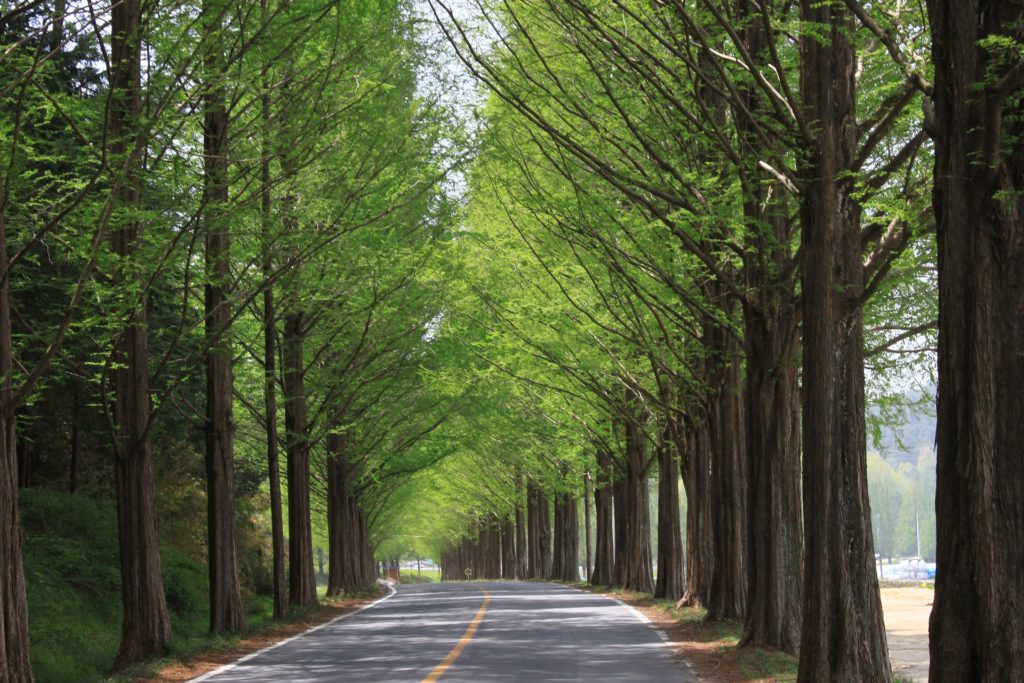Brandon Movall, Graduate Engineer, WSB
Road reconstruction projects affect residents of all cities, from large metropolitan areas to small rural centers. While residents are very familiar with the sight of bright orange cones and excavating machines that are shown for a few months in the summer, few know the full amount of work that goes into improving roads and public utilities the rest of the year. Here is a season by season breakdown of how a road reconstruction project comes to life:
Summer/Fall
The summer/fall season is when work on a specific project typically begins for the upcoming construction season, with the start of preliminary design. Depending on the size and complexity of the project, preliminary design can begin months or even years earlier than this time frame.
The preliminary design begins by collecting extensive information on the existing conditions of the public infrastructure in the project area. This can be done through a topographic survey of the area, taking geotechnical readings on the materials in the area, and even reviewing asset management systems or old plan sets for the project area.
Based on the information gathered, the project team (typically consisting of transportation and municipal engineers) can identify improvements needed within the project area. The team then provides a preliminary overview of proposed improvements to the project owners, private utility companies such as gas or electric that could be impacted, residents, business owners and other stakeholders in the project area. At this point, public engagement becomes critical to connect with the owners, companies, and residents to solicit feedback on the proposed improvements and gather additional information on existing conditions. This feedback can be achieved through neighborhood meetings, showcasing visualizations, and conducting community surveys.
After gathering feedback, the project team presents the proposed infrastructure improvements along with estimates on costs and schedule to the project owners, and, if the project is still supported, begins final design.

Fall/Winter
The fall/winter season is dedicated to final design of the project. The team (supported by site & landscape designers, water resource engineers and wastewater engineers) completes final design documents that specialists in infrastructure construction techniques will use build the project. These documents will complete the city’s vision for the project while ensuring it is properly engineered and safe for residents. The design includes not only the pavement that residents drive on, but also all of the public utilities in the project area, such as storm sewer, sanitary sewer and watermain.
During this time, the project will also be reviewed by permitting agencies that have jurisdiction over certain aspects of the project. These agencies, such as a county or state transportation agency, may have jurisdiction over neighboring roads. Other agencies, like a state departments of natural resources, may review the project for environmental regulations within the project area.
Once the plans and specifications are complete, the project team will share the finished design documents with the project owner. The project is then authorized to be bid for construction.
Winter/Spring
The spring season is used to bid the project and prepare for construction. After the project is authorized to be bid, a notice goes out to contractors notifying them of the project and providing them access to the plans and specifications. If a contractor is interested in constructing the project, they submit a set of documents to the project owner. These documents include insurance information, proof of bonds, and their bid of how much they believe it will cost to construct the project. At an arranged time, a contractor will be selected from those that submitted a bid.
Once a contractor has been selected, project management and construction administration begins. Preliminary construction meetings are held with the project owners, the project team, and other stakeholders, to prepare for the upcoming construction of the project.

Spring/Summer
After the preliminary and final designs are complete, construction -the most visible stage of a project – can begin during the spring/summer season. During this time, the project team monitors contractor progress on the project, and ensures that the construction is being done according to the plans and specifications that were prepared in the fall/winter. This monitoring consists of a variety of activities that include construction material testing, environmental compliance, and more.
Because the winter season is often the longest in the Midwest, the time frame for construction is extremely short. To protect the final product, some projects require contractors to wait until after winter to finish minor paving and restoration work during the following spring/summer season.
Once all of the work is complete and accepted by the project owner, the contract is finalized and closed out. Usually a maintenance period is required of the contractor, during which time they are responsible to address any workmanship or materials defects which are identified following close out.
At this point, the project is considered complete. The project owner is responsible for ongoing maintenance and repair of the infrastructure through their Public Works Department. The new seasonal cycle begins with the next project that was prioritized or identified within that community’s Capital Improvement Plan or similar planning document. Learn about how WSB can assist your community with any or all of these project cycles by visiting https://www.wsbeng.com/expertise/community/ or clicking on any of the linked services above.

Brandon is a Graduate Engineer with WSB and serves as the assistant city engineer for the City of Sunfish Lake, MN. He is experienced with reviewing developer and residential land development plans and management of cities’ Municipal State Aid Systems (MSAS) through the Minnesota Department of Transportation (MnDOT).

